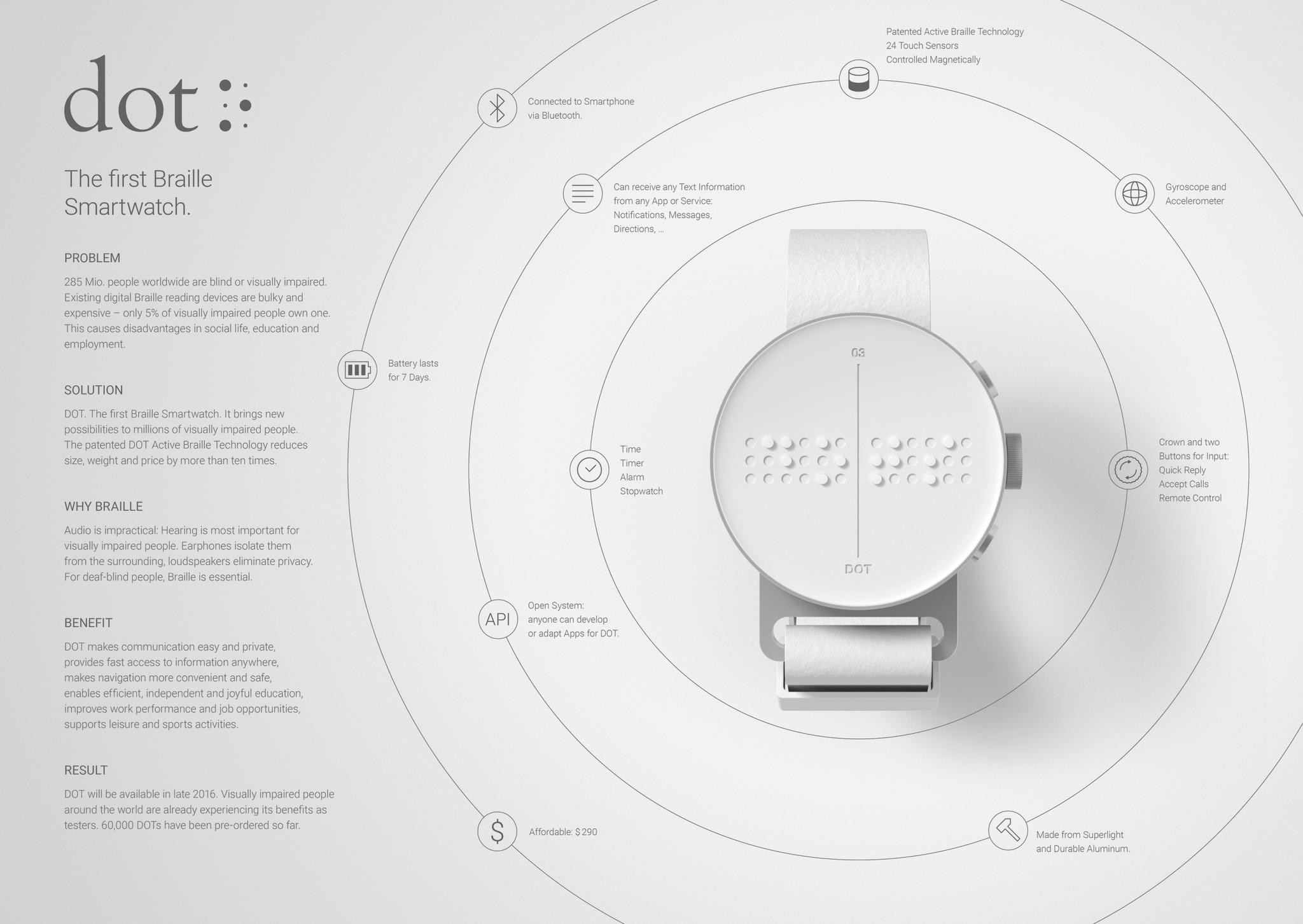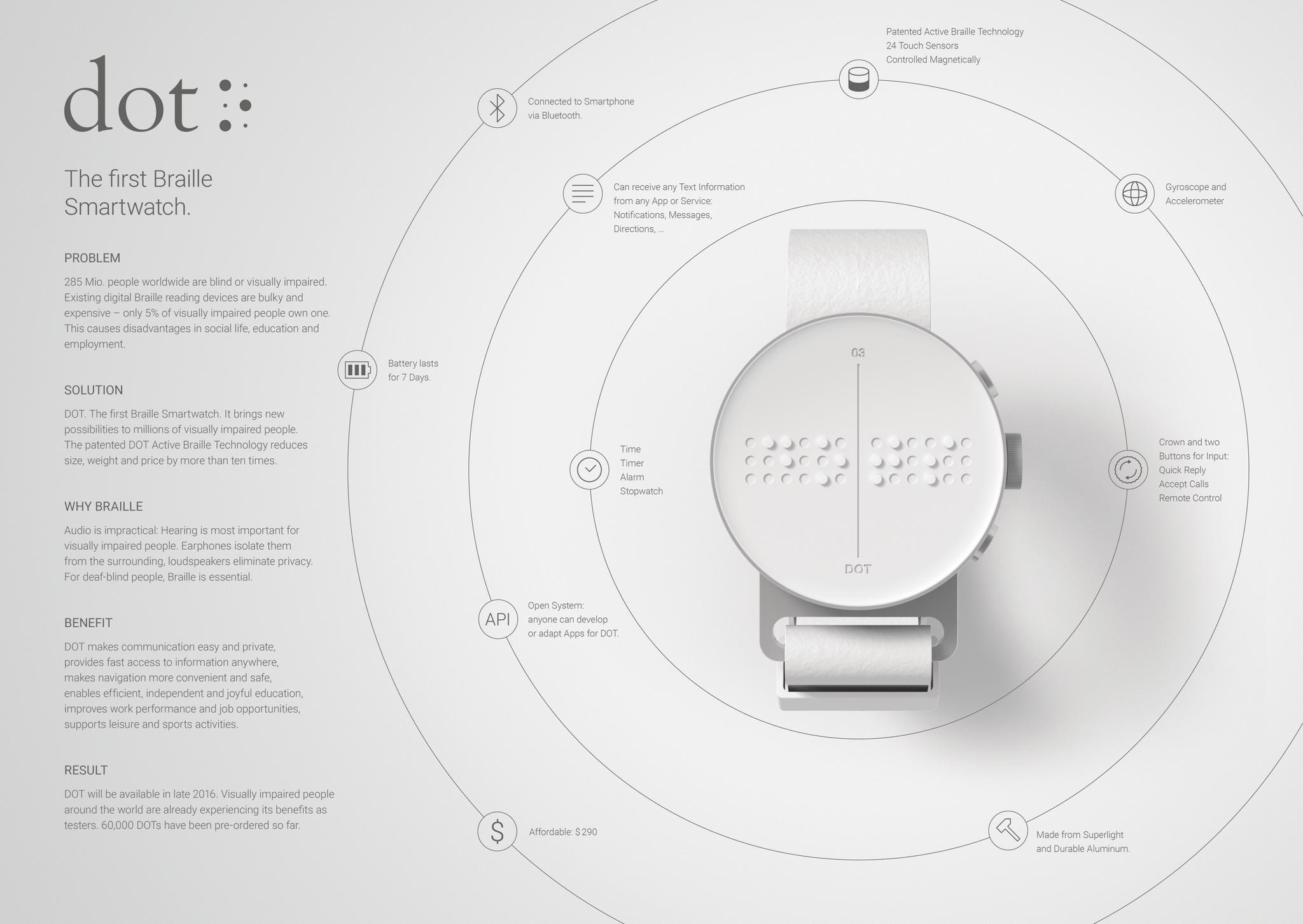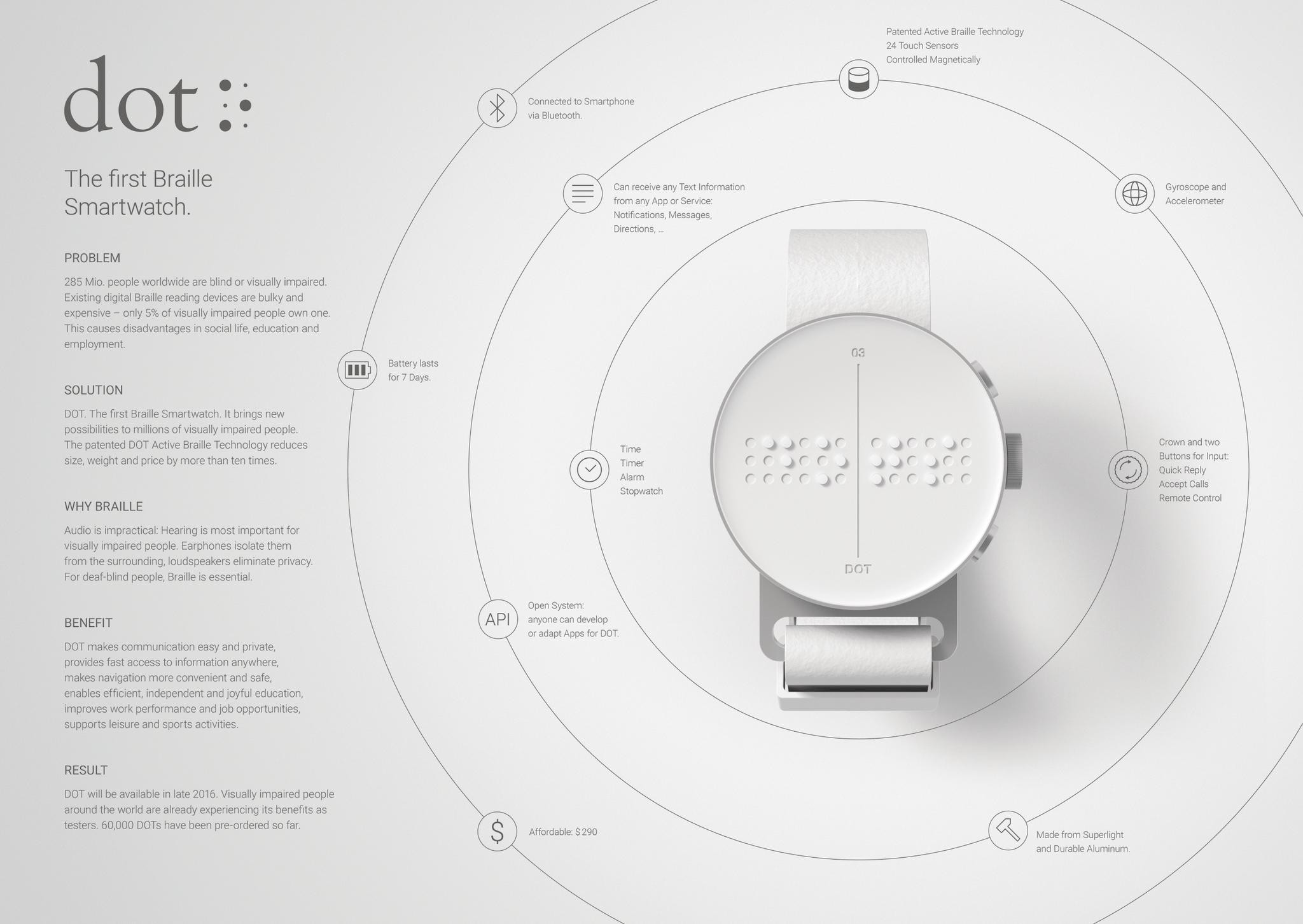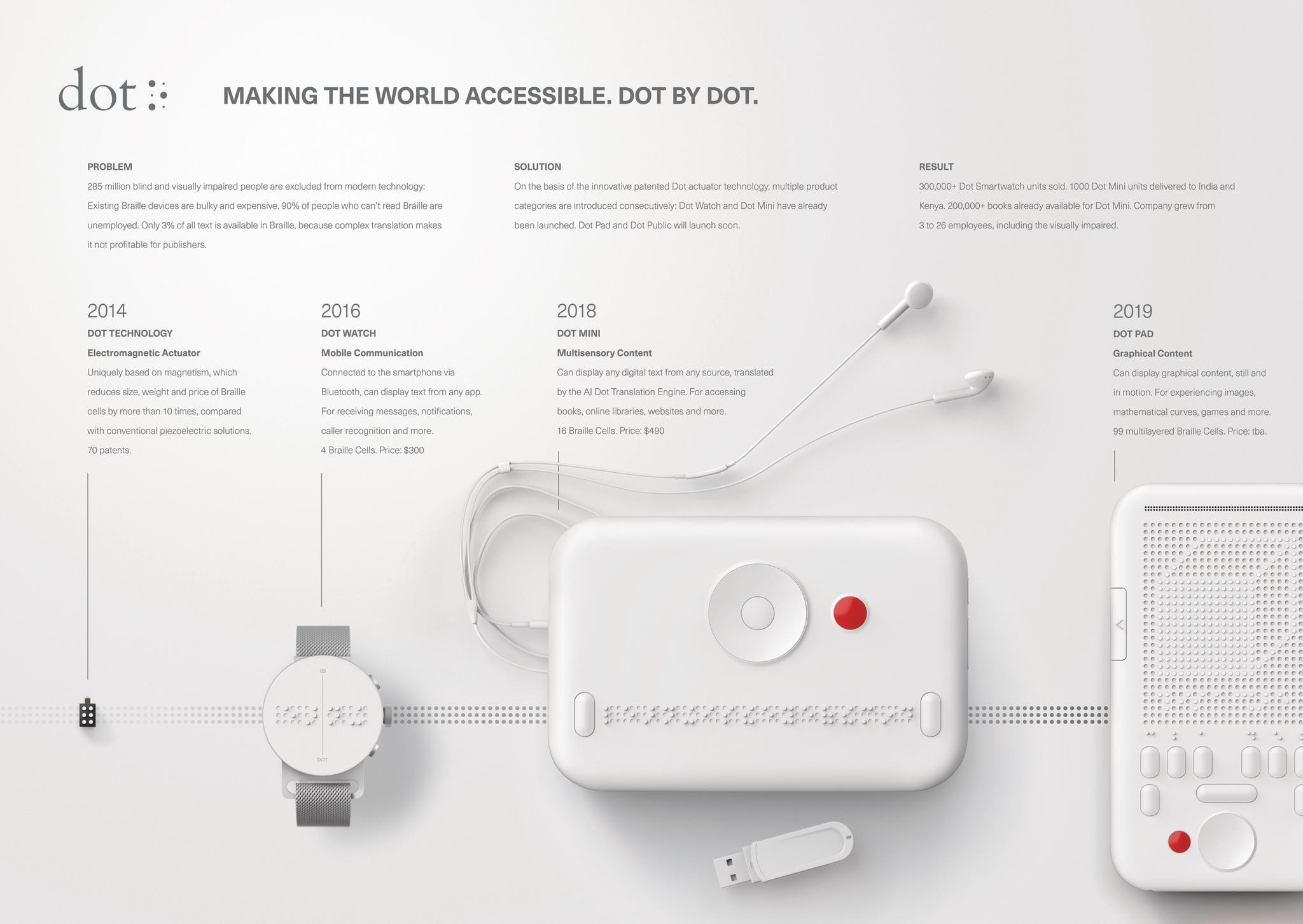Spikes Asia
DOT. The first Braille Smartwatch
SERVICEPLAN KOREA, Seoul / DOT INCORPORATION / 2016
Awards:








Overview
Entries
Credits
OVERVIEW
Background
285 Mio. people worldwide– 4% of the population – are blind and visually impaired (B&VI). Living without vision is complicated – and for the last 20 years, there were almost no innovations in communications technology for the B&VI:
Existing digital Braille reading devices are heavy, bulky and expensive. They weigh around 2kg and cost in between $3,000 to $15,000.
This makes them unaffordable to the majority of B&VI people: only 5% own such a device – not to speak of the situation in developing countries.
Audio solutions are impractical, because hearing is important for B&VI people: Earphones isolate from the surrounding, making orientation and communication difficult, loudspeakers eliminate privacy. For deaf-blind people, Braille is essential.
This “discrimination by technology” causes disadvantages in social life and especially in education: Braille literacy has decreased to under 10%, despite studies showing that Braille literacy leads to a 3 times higher chance of employment
Execution
DOT is connected to the smartphone via Bluetooth and can receive any information in text-form, from any app or service – e.g. notifications, texts, directions.
It has a crown and two buttons for input – e.g. quick reply, accept calls, remote control.
DOT comes with full smartwatch functionality: time, timer, alarm, stopwatch, gyroscope and accelerometer. It’s made from superlight durable aluminum, the battery lasts for 7 days and it costs $290.
DOT’s patented Active Braille Technology is based on solenoid multi-actuators controlling four Braille cells with 24 pins by magnetism instead of piezoelectricity as in other Braille devices.
This reduces size and production cost, increases speed and keeps energy consumption low.
DOT uses haptic force feedback technology to detect finger movement on the pins and automatically change the pins to show the next characters. Along with software, this makes it possible to display text rapidly and conveniently even with limited Braille cells.
Similar Campaigns
6 items
